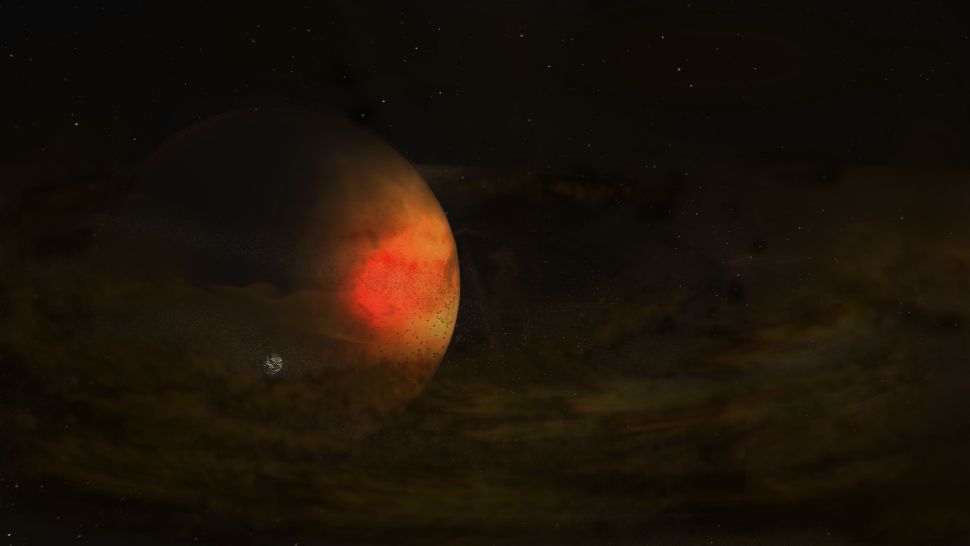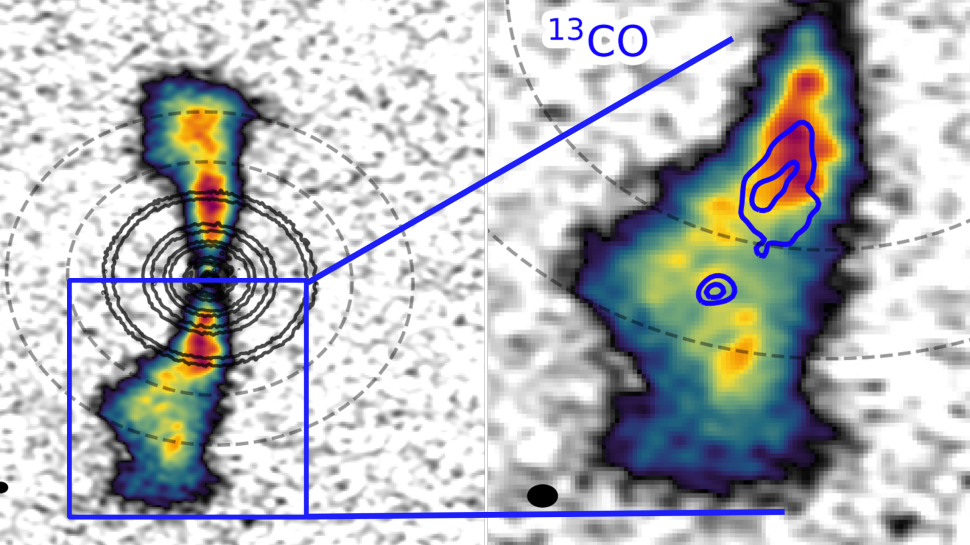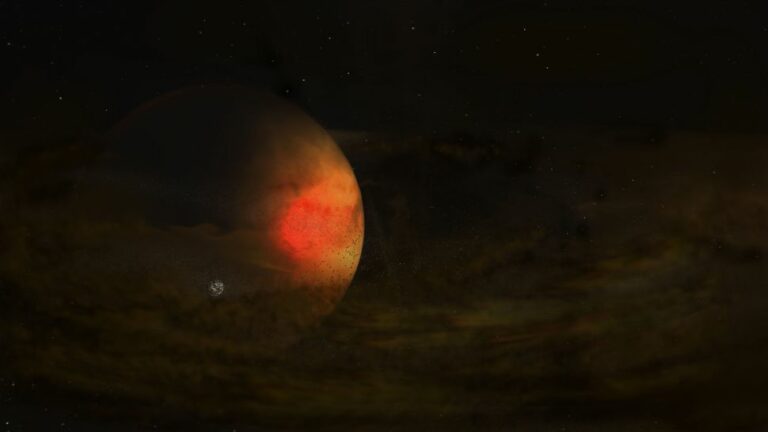Researchers discover a young extraterrestrial planet that may be producing moons.
“We are living in a very exciting time when this happens.”
Researchers may have discovered a gaseous young world.
According to the team which made the finding, a young, Jupiter-mass exoplanet may have been to blame for the first-ever gas detection in a disk orbiting a distant star.
The National Radio Astronomy Observatory reports(opens in new tab) that a “blob of emitted light” around the star AS 209 glowed in studies with the Atacama Large Millimeter/submillimeter Array (ALMA), in an otherwise silent gap of gas in the star’s disk (NRAO).

“Observing planets as they develop is the most effective technique to understand planet formation. Powerful telescopes have made the moment when this occurs quite exciting “In a statement released by the NRAO on Tuesday, the study’s principal author, University of Florida professor Jaehan Bae, said (Aug. 9).
According to the study team, gaseous findings like this one will help explain how planetary atmospheres arise as well as how moons coalesce during the early phases of a solar system.
The alleged exoplanet is located in a system 395 light-years away from Earth, which is a near location on the cosmic scale. However, the exoplanet is astronomically 200 astronomical units (AU) away from its home star, which challenges theories about how planets are created.
According to current planetary formation ideas, it is thought that regions containing a lot of gas and dust are most suited for the development of gas giants. By contrast, smaller and icier objects like those in our own Kuiper Belt are anticipated to be abundant in a solar system’s outermost regions.
Scientists are examining a few different scenarios for how the AS 209 disk could be able to host a planet of this size, so distant from its star. One hypothesis is that the disk was gravitationally unstable in the distant past, maybe as a result of some form of tidal disturbance. However, according to the team’s most recent calculations, such instabilities can only result in pieces that are a few times the mass of Jupiter. The researchers’ findings show that even if it did, planets are less likely to move after accretion.
The temperature in the midplane and the gas surface density profile of AS 209’s disk, which has a comparatively low mass, indicate that it is currently stable. The researchers stated in their paper(opens in new tab), which was published on July 27 in Astrophysical Journal Letters, “While it is not impossible that the disk was sufficiently massive in the past, the small present-day disk mass implies that the disk should have lost its mass very efficiently since then.”

The second main theory for how the planet grew so big is pebble accretion, although scientists are still working out a few possible scenarios. Although researchers offer a few methods gas accretion would make it conceivable, it is still unknown how the planet’s core expanded sufficiently and why it was unable to catch millimeter grains outside of its own orbit by doing so.
In addition, the team is examining if there were sufficient stones nearby to create a huge planet, which may have formed as a result of pressure bumps or infalling flows in the gas encircling the star. Along with its pace, the timeframe for accretion is also unknown.
The discovery was heralded as new by the team since it was the first to demonstrate the presence of circumplanetary disks surrounding exoplanets. However, they pointed out that in 2019 and 2021, researchers using ALMA were able to identify a moon-forming disk surrounding the planetary PDS 70c.
Do not forget to share your opinion with us to provide you with the best posts !




0 Comments